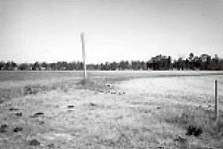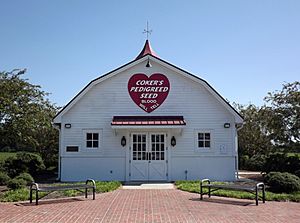Coker Experimental Farms facts for kids
|
Coker Experimental Farms
|
|

Coker Experimental Farms
|
|
| Nearest city | Hartsville, South Carolina |
|---|---|
| Area | 145 acres (59 ha) |
| Built | 1902 |
| NRHP reference No. | 66000706 |
Quick facts for kids Significant dates |
|
| Added to NRHP | October 15, 1966 |
| Designated NHL | July 19, 1964 |
Coker Experimental Farms, also known as Coker Pedigreed Seed Company, is a special farm in Hartsville, South Carolina, USA. It is recognized as a National Historic Landmark. This means it's a very important place in American history.
This farm is now home to a museum. It was once where David Robert Coker did amazing work. He experimented with plants to make cotton and other crops grow better. His efforts helped farmers all over the southern United States. David R. Coker also helped teach farmers new ways to grow crops. His farm was named a National Historic Landmark in 1964.
Discovering Coker Farms
David Coker's Big Ideas
The Coker family owned many farms around Hartsville, South Carolina. David R. Coker started his important work at their main farm. He used new ideas about how plants pass on their traits. These ideas were first discovered by Gregor Mendel in the 1860s.
Coker's first goal was to grow better cotton. He wanted cotton with longer fibers. He also worked to make plants stronger against diseases and bugs. Soon, he started improving other crops too. He taught farmers new methods through special programs. These programs helped farmers learn and grow.
By 1963, more than half of the cotton grown in the South came from Coker's special seeds. His seeds also improved oat and tobacco crops.
The Farm's Journey Through Time

In 1964, about 220 acres (89 ha) of Coker's experimental farm became a National Historic Landmark. This was because his work changed farming in the South. Over the years, some parts of the original farm were developed.
By the 1990s, some old farm buildings were taken down. More land was used for businesses. So, the landmark area was made smaller, to about 145 acres (59 ha). Today, a smaller part of the farmland remains. A museum shaped like a barn now stands there. It helps visitors learn about the farm's important history.
See also




